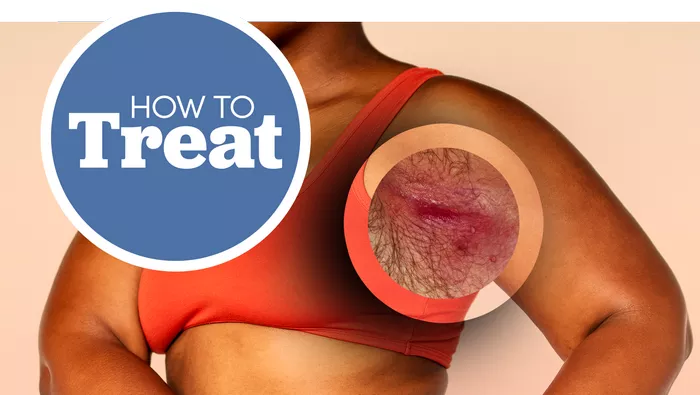Hidradenitis Suppurativa (HS) is a chronic inflammatory skin condition that affects approximately 1% of the population worldwide. Characterized by painful nodules, abscesses, and sinus tracts, HS primarily manifests in the apocrine gland-bearing areas of the body, such as the axillae, groin, and buttocks. While the physical and emotional toll of HS is well-documented, there remains considerable confusion and misinformation surrounding its contagiousness and spread. In this comprehensive exploration, we aim to dissect the truth behind the question: does Hidradenitis Suppurativa spread?
Understanding Hidradenitis Suppurativa
Before delving into the spread of HS, it’s crucial to understand its underlying pathology. While the exact cause remains elusive, HS is believed to stem from a combination of genetic predisposition, immune dysfunction, and environmental factors. It typically begins after puberty and tends to worsen over time, with periods of remission and exacerbation.
The hallmark of HS is the formation of painful lesions in areas rich in apocrine glands, which are responsible for sweat production. These lesions can vary in size and severity, ranging from small, tender nodules to large, inflamed abscesses. Additionally, sinus tracts may develop, leading to the formation of interconnected tunnels beneath the skin’s surface. The chronic nature of HS often leads to scarring and significant impairment of quality of life.
Dispelling the Myth of Contagion
One of the most pervasive misconceptions surrounding HS is the belief that it is contagious. This misconception likely stems from the visible nature of the lesions and the associated drainage, leading some individuals to fear that they could contract the condition through direct contact with an affected person. However, extensive research has consistently refuted the notion that HS is contagious.
HS is not caused by bacteria or viruses that can be transmitted from person to person. Instead, it is a complex inflammatory disorder with genetic and immune components. While bacterial colonization may occur within the lesions, these bacteria are not the primary drivers of the disease but rather opportunistic pathogens taking advantage of the compromised skin barrier. Therefore, casual contact with someone who has HS poses no risk of transmission.
Factors Influencing Disease Progression
While HS itself is not contagious, certain factors may influence its progression within an individual’s body. These factors include:
1. Genetics: Family history plays a significant role in the development of HS, with studies indicating a strong genetic component. Individuals with a family history of HS are at a higher risk of developing the condition themselves, suggesting a hereditary predisposition.
2. Immune Dysfunction: Dysregulation of the immune system is a central feature of HS. Abnormalities in immune function can lead to chronic inflammation and impaired wound healing, exacerbating the symptoms of HS and promoting disease progression.
3. Environmental Triggers: While not contagious in the traditional sense, HS may be influenced by environmental factors such as obesity, smoking, and hormonal fluctuations. These factors can exacerbate inflammation and contribute to the formation of lesions.
4. Disease Severity: The severity of HS can vary widely among individuals, with some experiencing mild symptoms and others facing debilitating complications. Severe cases of HS may be associated with a higher risk of disease spread within the affected individual’s body, as extensive tunneling and inflammation can lead to the formation of new lesions.
Management and Prevention
Although HS cannot be cured, various treatment modalities are available to manage symptoms and improve quality of life. These may include:
1. Topical Treatments: Topical antibiotics, corticosteroids, and antiseptic washes can help reduce inflammation and prevent infection in mild cases of HS.
2. Systemic Therapies: For moderate to severe HS, systemic treatments such as oral antibiotics, immunosuppressants, and biologic agents may be prescribed to target inflammation and prevent disease progression.
3. Surgical Intervention: In cases of advanced HS or when conservative measures fail, surgical intervention may be necessary to drain abscesses, excise affected tissue, and reconstruct damaged areas.
In addition to medical management, certain lifestyle modifications can help prevent flare-ups and improve overall outcomes for individuals with HS. These may include maintaining a healthy weight, avoiding tight-fitting clothing, practicing good hygiene, and managing stress.
Conclusion
In conclusion, Hidradenitis Suppurativa is a chronic inflammatory skin condition characterized by painful nodules, abscesses, and sinus tracts. Despite common misconceptions, HS is not contagious and cannot be spread through casual contact. Instead, it is a complex disorder influenced by genetic predisposition, immune dysfunction, and environmental factors. By understanding the factors contributing to HS and implementing appropriate management strategies, individuals can effectively manage symptoms and improve their quality of life.
Related Topics:
Discovering the Relationship Between Hidradenitis Suppurativa and Staphylococcus Aureus


























